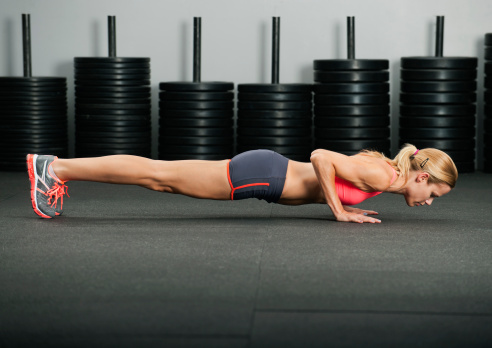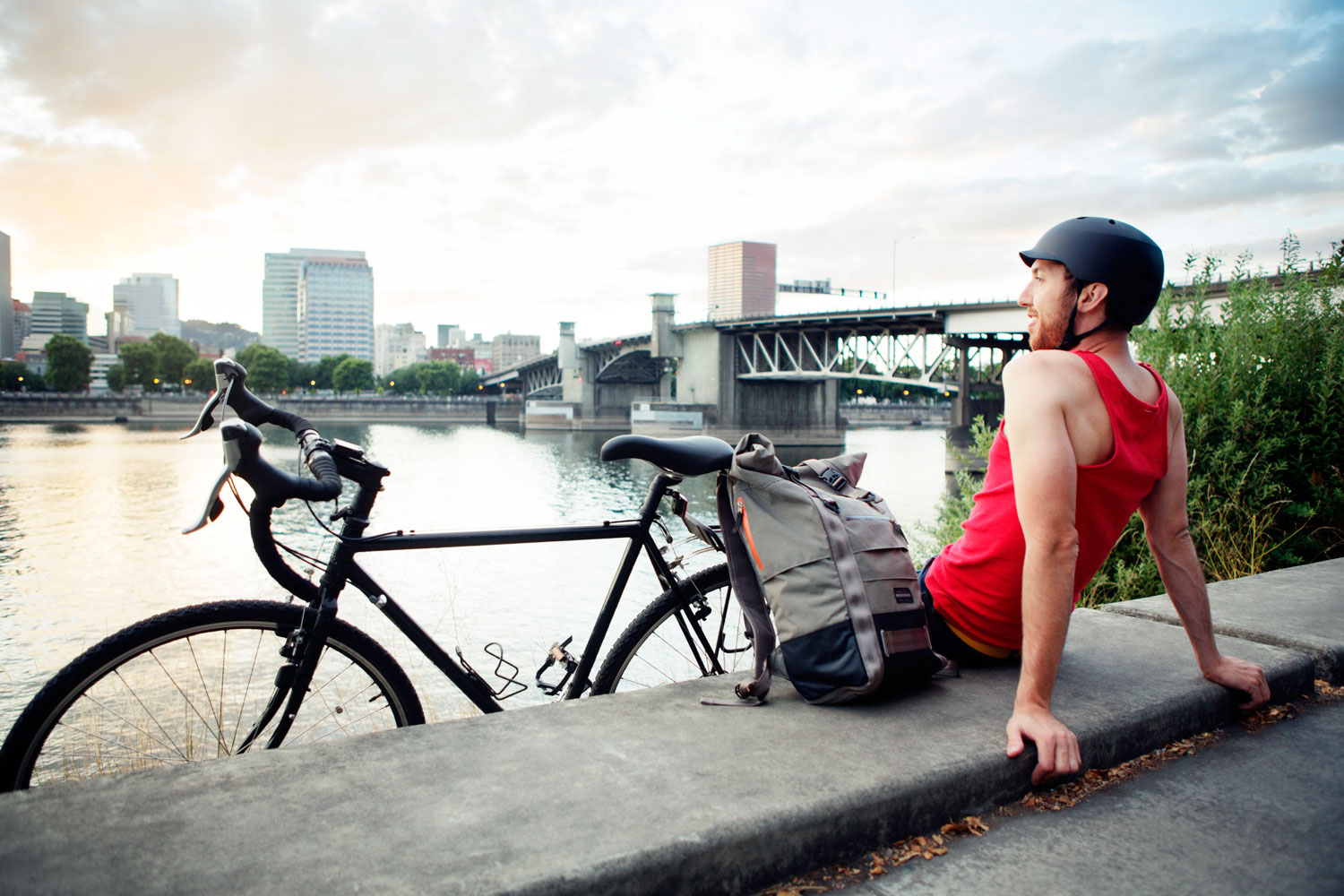
We always hear that it’s necessary to keep “switching it up” when it comes to our workouts. While it’s true that constantly sending a shock to the body is essential in terms of becoming stronger and seeing results, these shocks don’t have to come in the form of changing your workout completely.
Making tiny tweaks to the same exercises you’re used to doing can create needed variety in your body without forcing you to give up the moves you already know and love.
Here are 6 tiny tweaks you can try adding in to your workout routine to achieve lasting results.
Challenge your balance
Adding an unstable surface to your move of choice is one of the most challenging variations you can do to an exercise. Plus, it recruits all those smaller muscles in addition to the larger ones so your body is working double time.
The exercise: BOSU burpee
Squat down and place your hands on the edges of a BOSU balance trainer and jump your feet back so that you land in a pushup position. Lower your chest to the ground, press back up to complete a push-up, and then jump your feet back toward your hands. Pick up the BOSU and press it overhead as you explosively jump up in the air, then squat back down and place it on the ground. That’s one rep. Try to do 3 sets of 15 reps.
Read more: 3 Ways to Do a Burpee
Change the position
When it seems like standard body weight exercises just aren’t cutting it anymore or you want to send a shock to the system, try changing the position of an exercise. Change your hand position or place your body on an incline or decline. Performing the same move in a different way can make it feel brand new again.
The exercise: Decline push-up
Find an elevated surface, like a park bench or plyometric box and place your feet on top. Kneel down and get into a plank position with your hands on the ground directly underneath your wrists and your feet elevated above your heart. Start to bend your elbows wide until your collarbone almost touch the ground, and then straighten your arms. Do 15 reps.
Read more: How to Do the Perfect Push-Up
See the 10 Healthiest Cities to Live in America










Try one side at a time
The great thing about body weight exercises is that they’re easy to tweak and adjust in so many ways to make them harder. In this case, removing a leg or arm from the exercise is a surefire way to activate muscles in a new and fun way.
The exercise: Single-leg pelvic lift (shown here on a BOSU trainer)
Lie on your back with knees bent and feet flat on the floor. Place arms at your sides, palms face down. Extend one leg up toward the ceiling with foot flexed. Engage your glutes and lift the hips up as high as you can while keeping the upper back on the floor. Hold for 2 counts and then lower hips down. Complete 10 times, then switch legs and repeat.
Read more: Butt-Lifting Move: Hip Bridge
Add a pulse
Adding a pulse at the end of an exercise is the best way to activate the fast-twitch muscle fibers of the body. If you hadn’t already been feeling the burn, you’ll be feeling it now.
The exercise: Walking lunge with pulse
Step your left leg forward and lower your body into a lunge until both knees are bent at 90 degrees. Slowly pulse up and down by about an inch 10 times. Then, push through your left heel to return to standing; that’s one rep. Repeat with the right leg, and then do 3 more sets of 10 pulses on each leg.
Read more: Triceps Extension + Rhomboid Pulse
Hold the position
Most people are so quick to rush through each exercise because they want to get it over with or they’re trying to hit a certain amount of repetitions before they tire out. But instead of focusing on reps, how about focusing on length of time held in a position? One of the main benefits of isometric training is that the body is able to activate nearly all the available motor units—something that’s usually very difficult to do. This simple tweak can seem easy but become really challenging in a matter of seconds.
The exercise: Squat hold (or wall sit)
Although isometric moves can be done with equipment as well, here we are using body weight. The squat hold can be done as a wall sit or as a free-standing squat and hold. Place your feet hip-width apart. Sink down until your thighs are parallel to the ground, knees directly over your ankles. Make sure to sit back on your heels when you squat and don’t sink below 90 degrees with this move as this actually makes it easier. When your muscles start to burn or shake, try to hold for another minute (or as long as you can) before coming up.
Read more: 18 Moves to Tone Your Butt, Thighs, and Legs
Add a weight
It should come as no surprise that adding weight can make any exercise more difficult. But even a small 2- to 5-pound dumbbell can make a big difference when you’re switching it up from the norm.
The exercise: Side plank with weight
Lie on your right side with your forearm directly under your shoulder, hand perpendicular to your body, and legs stacked. Engage your abs and the right side of your waist, lifting your hips so your body forms a straight line from head to heels. Grab a small weight with your left hand and extend your arm toward the sky, staying engaged through your core. Then scoop your left arm under your torso, twisting only from the waist up. Come back up; repeat 8 times, then lower body to the ground. Repeat on the opposite side.
Read more: 20 Ways to Do a Plank
For more workout ideas, check out 5 Fitness Trends That Are Having A Moment.
This article originally appeared on Health.com.
Read next: 4 Apps That Can Help You Relax, Focus and Sweat
More Must-Reads from TIME
- Why Trump’s Message Worked on Latino Men
- What Trump’s Win Could Mean for Housing
- The 100 Must-Read Books of 2024
- Sleep Doctors Share the 1 Tip That’s Changed Their Lives
- Column: Let’s Bring Back Romance
- What It’s Like to Have Long COVID As a Kid
- FX’s Say Nothing Is the Must-Watch Political Thriller of 2024
- Merle Bombardieri Is Helping People Make the Baby Decision
Contact us at letters@time.com